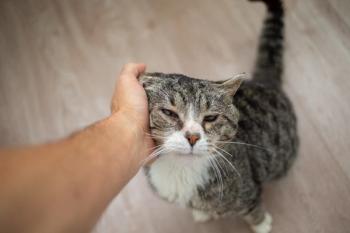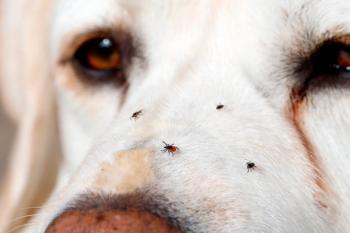
- dvm360 July 2020
- Volume 51
- Issue 7
Addressing the dismal lack of diversity in veterinary medicine
A second-year veterinary student shares his experience as the only black male student in his class—and how he plans to use his unique position as a platform to encourage change throughout the profession.
“Iron sharpens iron” is a phrase that I believe best describes the brotherhood at Morehouse College in Atlanta, Ga. An all-male, historically black college/university (HBCU) founded in 1867, Morehouse has produced such leaders as Dr. Martin Luther King Jr., Dr. Benjamin Elijah Mays, Maynard Jackson, Samuel L. Jackson, Spike Lee—the list goes on.
The HBCU experience
Morehouse enrolls roughly 2,000 students per year. Small class sizes—our biology program had about 100 students—meant that faculty members were extremely attentive and very accessible. For the first time in my education, a majority of my professors were black. They served as a daily inspiration, almost spitting images of who I wanted to become.
On the first day of new student orientation, more than 400 men who looked like me took to Brown Street and King’s Chapel (named after Dr. Martin Luther King Jr.), where we sang the sacred college hymns and learned the Morehouse history. Orientation week was focused primarily on building bonds among the freshmen class as well as with the upperclassmen, who were considered our “big brothers.” We spent the week learning the college’s core values and what’s expected of us as we go out into the world to establish ourselves as leaders. We were challenged to uphold the mantra of “the five wells”: well spoken, well dressed, well traveled, well read and well balanced.
A complete paradigm shift
Fast forward seven years, and I find myself in a space that is far from the powerful, spirit-moving environment of an HBCU. Coming from a place where for the first time in my life I wasn’t an outlier to a place where I am significantly outnumbered has been very sobering. I am the only black man among 123 students in my veterinary school class. I went from passing people in the hallway who I considered dear friends, to passing people who I feel may be asking themselves how I even got here.
Ever since starting my DVM journey at Virginia–Maryland College of Veterinary Medicine on the campus of Virginia Tech, I have felt continually defensive—like I need to prove that I do belong here. I also have a heightened sense of awareness about what people say around me and other minority students. Although this is a professional program, we still encounter people who have become extremely comfortable in their ignorance.
In light of recent events in America, I feel empowered to hold my colleagues accountable when it comes to both covert and overt discrimination and racism. We may be the minority, but we are by no means weak. Not only do we want to increase our presence in the field of veterinary medicine, but we want to expose and rid this profession of the lingering toxic, racist ideologies that have plagued our country since its inception. There is no more room for racism, sexism or intolerance of people who don’t identify as heterosexual.
My biggest hurdle yet
My transition to a predominantly white space has made me more aware of the dismal lack of diversity in veterinary medicine and propelled me and my minority peers to demand change. Representation matters, and we are seeking to balance out the numbers within our field. We are undoubtedly grateful for our opportunity to attend these institutions and pursue our dreams of becoming veterinarians, but far too many of us have been denied that same opportunity. We are not only denied from veterinary schools, but we often lack access to many resources and opportunities that can better prepare us for a career in veterinary medicine.
My time at Morehouse College prepared me to be a leader and stand firm in my beliefs. I was challenged to leave my profession better than how I found it. I have a responsibility to tear down these roadblocks that I somehow managed to leap over. Statistically, I shouldn’t be where I am right now. I am a firm believer in a higher being, and I know that I have been blessed with this opportunity and platform to help move the veterinary field into a new direction. There are many other minority students who are well deserving of an opportunity to become a veterinarian.
Dismantling racism
Where we find ourselves today has been built by decades of unfounded hate, and it can’t be fixed overnight. I am an advocate for my people, and I refuse to let my experience remain the norm. My goal is to use my platform to encourage change, so that one day I can ensure that all those who come after me do not have to navigate the same murky waters that many of us have had to cross.
Racism is a primary disease that is at the root of many societal problems in America. As doctors and future doctors, we have always been taught to address the underlying issues. Well it’s time for us to do just that. Black lives will always matter.
Chris Hollingsworth is a second-year veterinary student at Virginia–Maryland College of Veterinary Medicine. He was born in Guyana, South America and raised in Silver Spring, Maryland. Hollingsworth found his passion within the veterinary field through diverse experiences at a small animal practice, in a laboratory, and at the National Institutes of Health in Bethesda, Maryland. He currently serves as the vice president of his school’s student chapter of the American College of Veterinary Pathologists. He hopes to pursue a residency in anatomic veterinary pathology upon graduation in May 2023.
Articles in this issue
over 5 years ago
I like big blocks and I cannot lieover 5 years ago
Why are there so many different models for COVID-19?over 5 years ago
Vector-borne disease prevalence in dogs with proteinuriaover 5 years ago
Modulating the immune system to fight for goodover 5 years ago
FDA OKs cell therapy clinical trial for feline gingivostomatitisover 5 years ago
Hillbilly beardover 5 years ago
The right task at the right timeover 5 years ago
Can dogs be used to screen for COVID-19?over 5 years ago
Can pandemic rules be broken?over 5 years ago
What at-will employment means for veterinariansNewsletter
From exam room tips to practice management insights, get trusted veterinary news delivered straight to your inbox—subscribe to dvm360.






